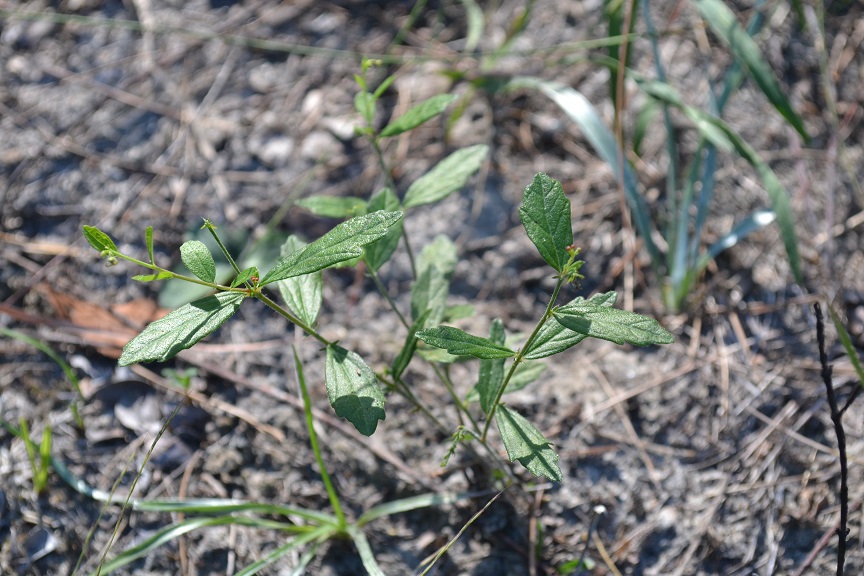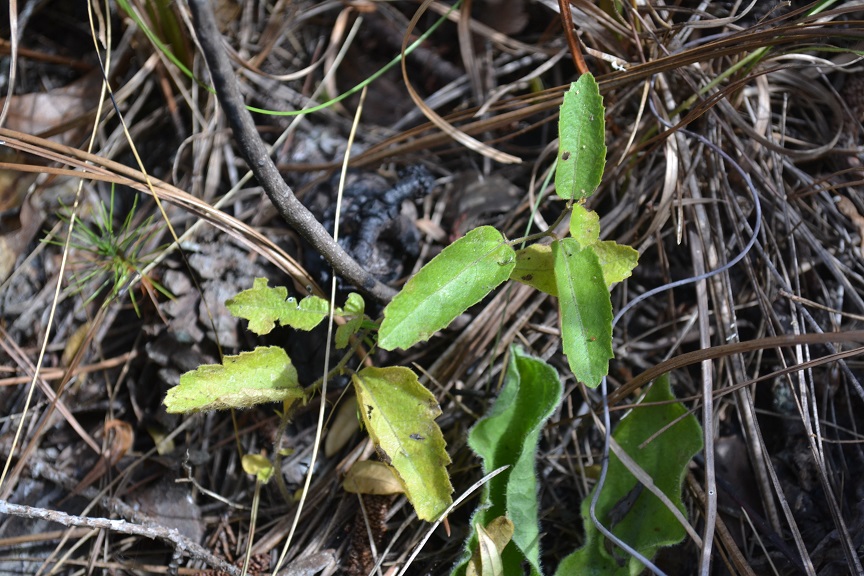Difference between revisions of "Tragia urens"
Laurenloria (talk | contribs) (→Seed dispersal) |
|||
| Line 37: | Line 37: | ||
===Seed dispersal=== | ===Seed dispersal=== | ||
| − | + | This species disperses by explosion mechanisms or by ants. <ref>Kirkman, L. Katherine. Unpublished database of seed dispersal mode of plants found in Coastal Plain longleaf pine-grasslands of the Jones Ecological Research Center, Georgia.</ref> | |
<!--===Seed bank and germination===--> | <!--===Seed bank and germination===--> | ||
<!--===Fire ecology===--> <!--Fire tolerance, fire dependence, adaptive fire responses--> | <!--===Fire ecology===--> <!--Fire tolerance, fire dependence, adaptive fire responses--> | ||
| Line 43: | Line 43: | ||
<!--===Use by animals===--> <!--Herbivory, granivory, insect hosting, etc.--> | <!--===Use by animals===--> <!--Herbivory, granivory, insect hosting, etc.--> | ||
<!--===Diseases and parasites===--> | <!--===Diseases and parasites===--> | ||
| + | |||
==Conservation and management== | ==Conservation and management== | ||
==Cultivation and restoration== | ==Cultivation and restoration== | ||
Revision as of 13:38, 18 November 2016
| Tragia urens | |
|---|---|

| |
| Photo by Kevin Robertson | |
| Scientific classification | |
| Kingdom: | Plantae |
| Division: | Magnoliophyta – Flowering plants |
| Class: | Magnoliopsida – Dicotyledons |
| Order: | Euphorbiales |
| Family: | Euphorbiaceae |
| Genus: | Tragia |
| Species: | T. urens |
| Binomial name | |
| Tragia urens L. | |

| |
| Natural range of Tragia urens from USDA NRCS Plants Database. | |
Common names: Wavyleaf noseburn, Southeastern noseburn
Contents
Taxonomic notes
Synonym: Tragia linearifolia Elliott
Description
"Monoecious, perennial, rhizomatous herbs, armed with stinging trichomes. Leaves alternate, stipulate. Racemes axillary or terminal, or both, lowest 1 or 2 flowers pistillate, the upper staminate. Flowers greenish or purplish; petals absent; staminate flowers with 3-5 sepals and 2 or 3 stamens; pistillate with 3-8 sepals and 3 stigmas. Capsule 3-locular, 4-5 mm long, 7-8 mm in diam., each locule 1-seeded. Seeds light brown with darker mottling, or entirely dark brown, ovoid, 3-3.5 mm long; caruncle obsolete." [1]
"Plant 2-5 dm tall, freely branched. Leaves narrowly elliptic to oblanceolate or linear, 2-10 cm long, 0.2-2 cm wide, irregularly serrate, undulate or entire, base cuneate to attenuate; petioles 1-3 mm long. Racemes short or elongate, 0.3-12 cm long." [1]
Distribution
Ecology
Habitat
In the Coastal Plain in Florida and Georgia, T. urens has been found in sand of open woodlands, pine uplands, fallow fields, annually burned pineland, sandhills, sand pine scrub, longleaf pine/wiregrass communities, and open pine savannas. [2] Associated species include longleaf pine, sand pine, and wiregrass. [2]
Phenology
It has been observed flowering in April and May and fruiting May through September. [2]
Seed dispersal
This species disperses by explosion mechanisms or by ants. [3]
Conservation and management
Cultivation and restoration
Photo Gallery
References and notes
- ↑ 1.0 1.1 Radford, Albert E., Harry E. Ahles, and C. Ritchie Bell. Manual of the Vascular Flora of the Carolinas. 1964, 1968. The University of North Carolina Press. 665. Print.
- ↑ 2.0 2.1 2.2 Florida State University Robert K. Godfrey Herbarium database. URL: http://herbarium.bio.fsu.edu. Last accessed: July 2015. Collectors: Loran C. Anderson, R. A. Norris, Robert K. Godfrey, Andre F. Clewell, Chris Cooksey, M. Davis, J. M. Kane, R. Komarek, Lisa Keppner, Cecil R Slaughter, Annie Schmidt. States and Counties: Florida: Duval, Franklin, Gadsden, Jackson, Leon, Osceola, Wakulla, Washington. Georgia: Thomas. Compiled by Tall Timbers Research Station and Land Conservancy.
- ↑ Kirkman, L. Katherine. Unpublished database of seed dispersal mode of plants found in Coastal Plain longleaf pine-grasslands of the Jones Ecological Research Center, Georgia.

